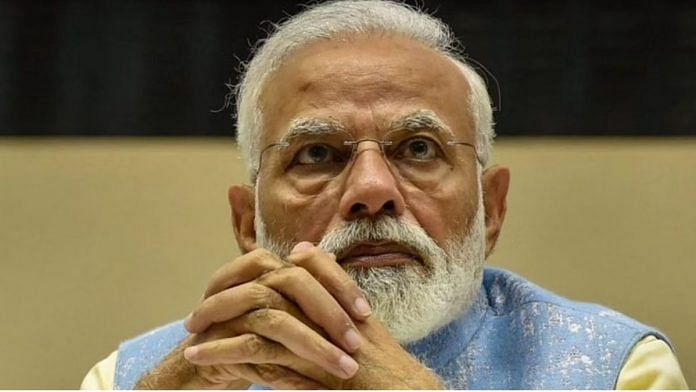The New York Times this week was host to a bizarre guest essay titled Modi’s India is where Global Democracy Dies. Before we get into this rather heady subject and its curious author, it would be in order to take a detour to certain news reports that emerged in late 2021 and early 2022.
In December 2021, The New York Times carried a multi-author report on how China funds YouTube influencers to spread pro-Beijing messages around the planet. The report also highlighted how sympathetic foreign voices were part of Beijing’s efforts to shape global conversations about China. In January, Business Insider carried another report on how Chinese-sponsored social media influencers were roped in to boost its image in the United States ahead of the 2022 Winter Olympics. In March this year, multiple Indian media outlets carried a syndicated news report from the Associated Press on how China’s TikTok and Facebook influencers were pushing propaganda related to the Russia-Ukraine conflict.
Modi’s India and global democracy
So, what exactly do these news reports on paid influencers advancing a certain geopolitical narrative have to do with The New York Times column on Modi’s India and “global democracy”?
Normally, the two ought to be unrelated, but these are not normal geopolitical times. Just a day back on 25 August, a Stanford University internet lab reported large-scale use of Meta and Twitter-based network of handles to advance Western narratives related to specific sensitive geopolitical issues where significant Western interests were at stake. While much of the focus of these studies has been social media influencers and bot networks to advance vested interests and narratives, there has been very little analysis of how mainstream media influencers could be similarly used by a sponsor nation.
A recent analysis published in The Communicator, a peer-reviewed journal of the Indian Institute of Mass Communications (IIMC), was perhaps the first attempt to examine how global mainstream media may have been manipulated into advancing negative narratives about India. An Analysis of Global Media Coverage of Events in India by Amol Parth is an in-depth review of India-related articles in The Washington Post, Wall Street Journal, New York Times, Time magazine and The Guardian. Covering more than 3,000 articles with a deep examination of a subset of 500, the paper revealed how sensational headlines and trigger keywords such as Muslim, cow, hate, fear, violence, riot, mob, Hindu and Kashmir were consistently employed to portray India in a negative light.
The guest essay in The New York Times is a typical example of the kind of narratives global mainstream media have been carrying on India for some time now. Curiously, the article had little to say about ‘global democracy’ despite the title. In fact, the subject was disposed in a one-sentence lament on the United States not calling out Modi’s India while betraying a soft corner for China.
A cursory look at the journalistic portfolio of the author on MuckRack.com reveals quite a startling picture. The portfolio, which goes back to 2008, lists various articles by this essayist in both Indian and Southeast Asian media apart from Time magazine, where he wrote revealing paeans to China and a string of negative articles on India.
Also read: India has moved away from ‘One China’ policy. Now it must develop independent ties with Taiwan
Pro-China bias
From questioning the role of anti-China narratives in Bollywood to blaming Indian media for ratcheting up China tensions, this essayist seems to have built quite a resume over the years, batting for China at times overtly and at other times subtly while tirading against “Modi’s India.” Even the token articles on protests in Hong Kong were laced with commentary to draw parallels with the Kashmir issue and the revocation of Article 370 by the Modi government. From touting Subramanian Swamy’s controversial remarks on the Dalai Lama to repeatedly pushing the narrative of India having provoked China into the 1962 war, the portfolio is quite revealing in its pro-China bias. Stunning though is how between 2019 and 2022, more than 25 articles by this author have singularly focused on the so-called death of democracy in Modi’s India with not even a single instance of mildly positive commentary.
How has this author managed to routinely land valuable column space in not just The New York Times but also the Time magazine to lament the state of democracy in India? Interestingly, the controversial pieces on India and Narendra Modi were also featured by Time magazine on its cover page on more than one occasion, raising questions about whether such premium placement was sponsored.
The irony of course is that this author of the “death of democracy,” who otherwise lives in repressive Hong Kong, is now freely travelling in Modi’s India on a book tour, touting his joint publication without the slightest of murmurs of “intolerant protests” or the mildest of fears of “authoritarian restrictions” being expressed.
Clearly, democracy in India remains as vibrant as ever before. However, the same cannot be said of the editorial health of global mainstream media, from The New York Times to the Time magazine. They seem to have become unwitting carriers of anti-India narratives as part of what appears to be pro-China propaganda to undermine Indian democracy.
Shashi Shekhar Vempati is former CEO of Prasar Bharati, India’s Public Service Broadcaster. He tweets @shashidigital. Views are personal.
(Edited by Zoya Bhatti)



